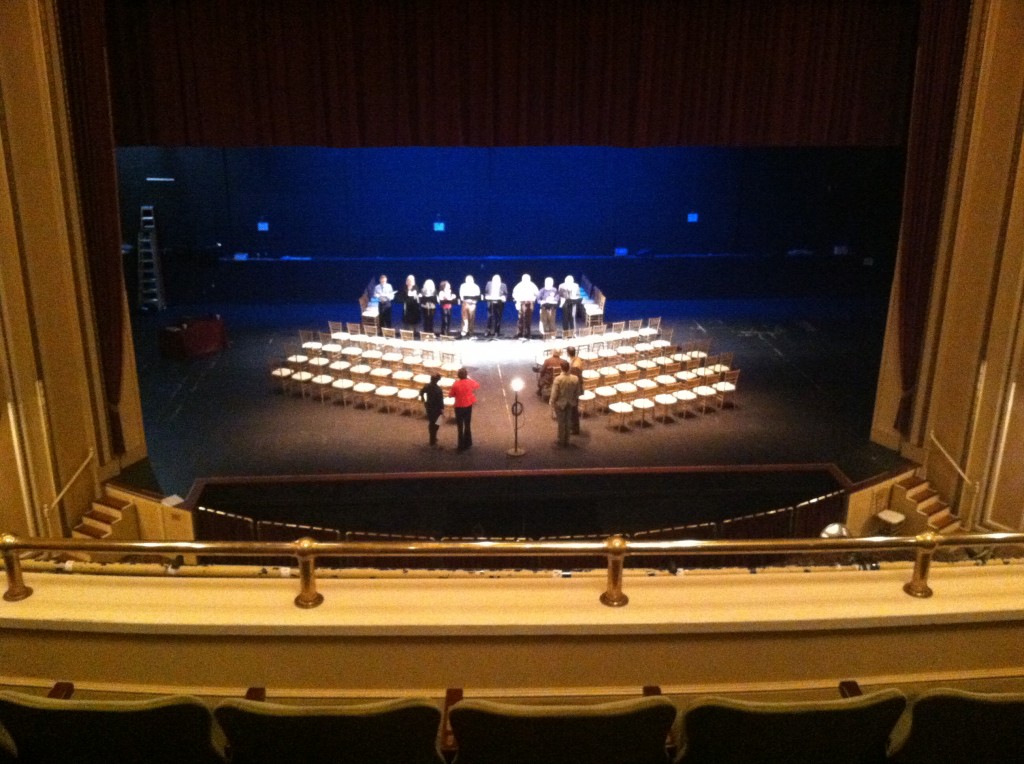 “…you sockdologizing old man-trap!” Stomp. Scream. Panic.
“…you sockdologizing old man-trap!” Stomp. Scream. Panic.
“Good, good – now next time, keep the scream going longer and continue the dialogue over it. Let’s see how that works.” This was just one of many exchanges between the group of nine actors practicing a staged reading of the historically-based play Sockdology, and Jeffrey Hatcher, the playwright who was also serving as director. These interactions continued all afternoon as the group – most of whom had only just met each other that day – attempted to bring excerpts of a play to life using just their acting talent, no scenes, no props, not even the entire script.
 This wasn’t my first trip to the beautifully restored Hanover Theatre on Main Street in Worcester, but it was quite possibly the most interesting. (In the interest of full disclosure it was only my second visit, but I stand by my statement.) The actors and playwright had gathered at the Hanover around noon to begin rehearsal for the performance taking place that evening, an AAS and Hanover co-sponsored public program called “Creating Historical Theater: A Dramatic Reading of Sockdology.” When I arrived an hour later, they were sitting in a circle in an elegant sitting room just off the lobby of the theatre, reading their parts with periodic directions from Hatcher. Aside from wishing that I could attend a cocktail party in this fabulous room, I was struck by the process going on in which a script became a performance, actors got to know their characters, and a director made all of the pieces fall into place. It was fascinating to see how an actor implementing a simple direction could make something funnier, more emotional, or more significant.
This wasn’t my first trip to the beautifully restored Hanover Theatre on Main Street in Worcester, but it was quite possibly the most interesting. (In the interest of full disclosure it was only my second visit, but I stand by my statement.) The actors and playwright had gathered at the Hanover around noon to begin rehearsal for the performance taking place that evening, an AAS and Hanover co-sponsored public program called “Creating Historical Theater: A Dramatic Reading of Sockdology.” When I arrived an hour later, they were sitting in a circle in an elegant sitting room just off the lobby of the theatre, reading their parts with periodic directions from Hatcher. Aside from wishing that I could attend a cocktail party in this fabulous room, I was struck by the process going on in which a script became a performance, actors got to know their characters, and a director made all of the pieces fall into place. It was fascinating to see how an actor implementing a simple direction could make something funnier, more emotional, or more significant.
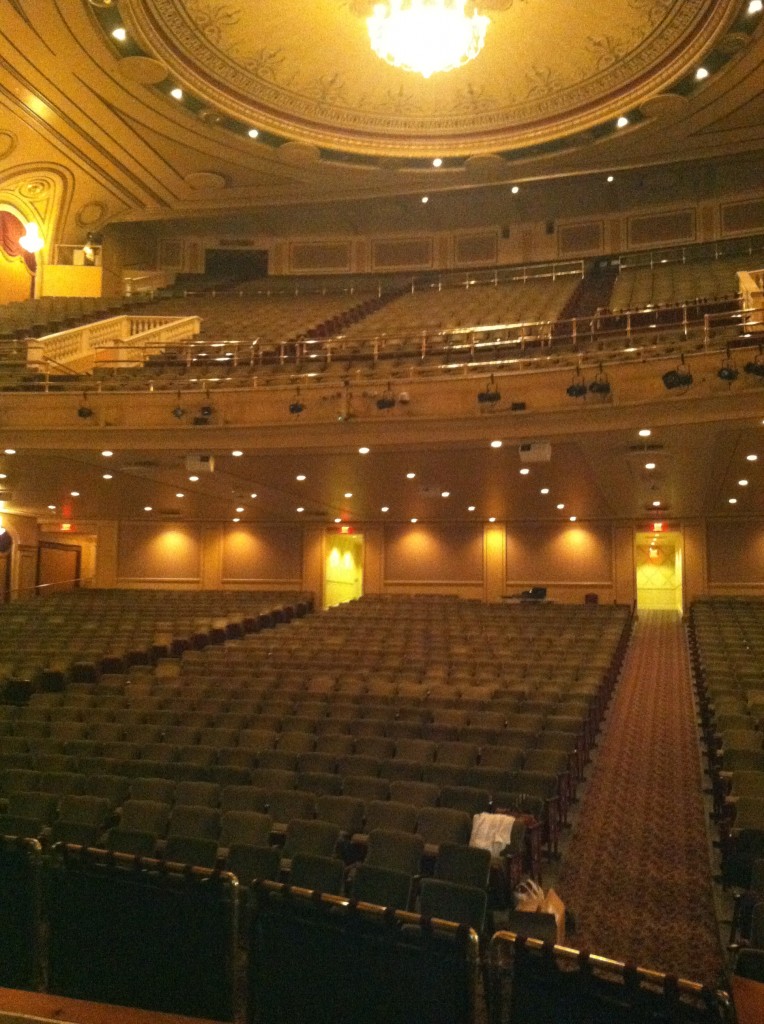
Once the rehearsal moved to the stage, an entirely new dimension was added to the practice. There’s something about an empty theater that makes it seem so grand, so full of possibilities. The performance, audience and all, was taking place on the stage itself, so that’s where we all congregated to continue with the rehearsal. I’d recently been to the Hanover for a great performance of West Side Story, and it was a bit strange to be on the stage looking out at the audience, seeing the spot where I had just been sitting as part of the masses. To think that this is what the actors see, but full of people, is humbling and gives a new appreciation for their work. Not to mention the deep orchestra pit in front, which prompted a conversation about the skill it takes dancers not to fall off the stage into it (although some did tell stories about those who were not so skilled at avoiding that particular “pitfall”).
But I digress. Being on the stage as the rehearsal continued, and into the evening as the audience filled the seats placed around the music stands holding the actors’ scripts, made the performance more intimate, in some ways providing a new sense of how the actors create their art.
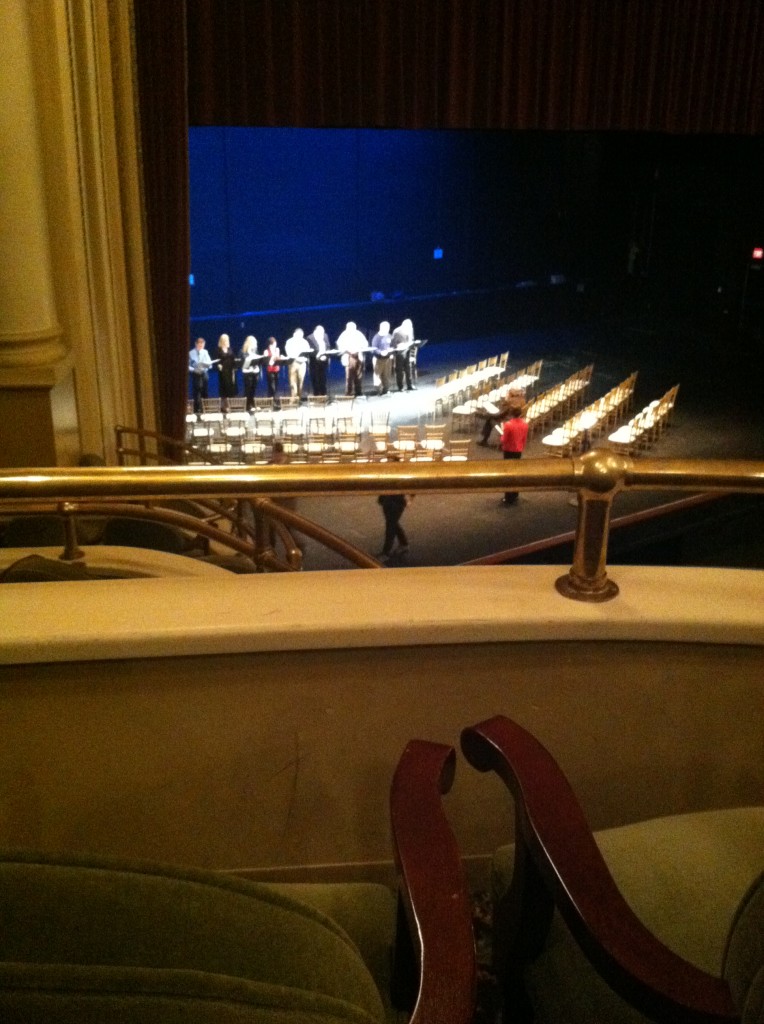
Then there was the play itself. The quote that began this post was a line in the play Our American Cousin, and was likely the last line that Lincoln heard before being shot while watching this play at Ford’s Theater. “Sockdology” is a boxing term that means a knock-out punch or “the brutal end of everything.” Hatcher used this somewhat ironic historical footnote to create his play, Sockdology, about the acting troupe that was performing Our American Cousin. The famous line weaves itself in and out of Hatcher’s script, as time moves forward and backward, imagining the moments before, during, and after Lincoln’s assassination. It was fascinating to watch the contemporary actors take on the quirky personalities of these historical actors while also creating the feeling that just off-stage, in the imaginary Ford’s Theater, Lincoln sat watching this popular play unaware of the fate about to befall him.
I took a trip up to one of the boxes to put myself in Lincoln’s viewpoint – sitting in a box, listening to lines (albeit here intermittently) from the play Our American Cousin. The style of the Hanover only added to the ambience. Its lush drapery, gilded ceiling décor, and sparkling chandelier are everything you would expect in a nineteenth-century city theater. Lincoln or no Lincoln, if you’ve ever wished you could have attended the theater in the nineteenth century the Hanover is a great place to start.
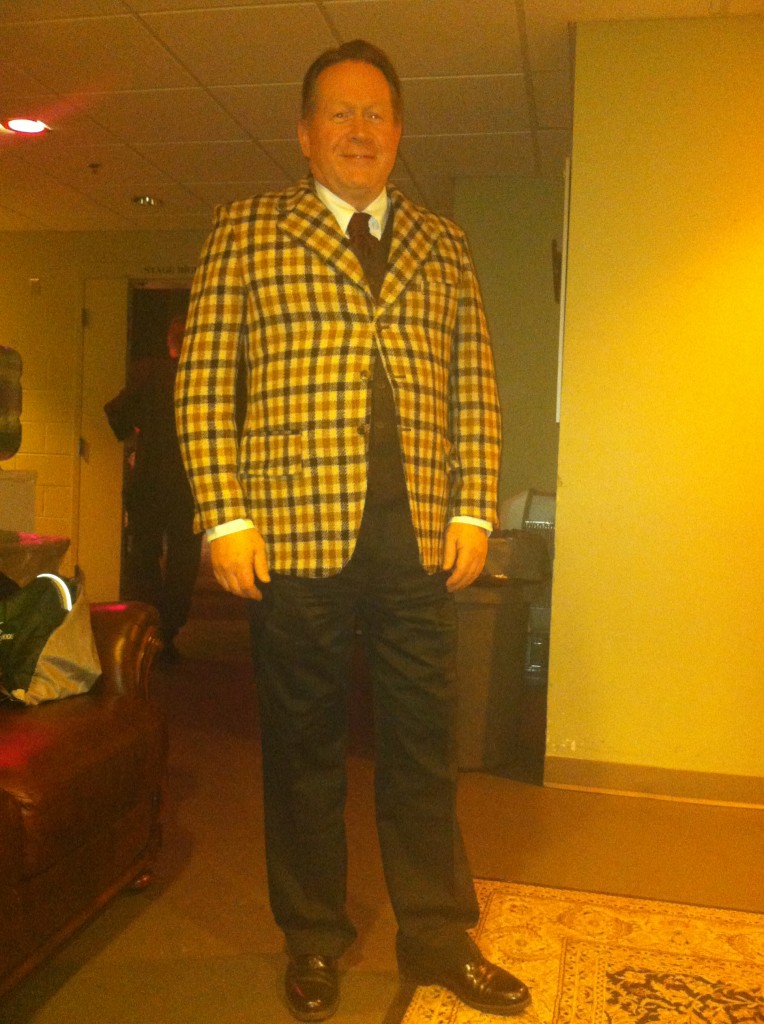
But perhaps one of my favorite parts of the night was watching Neil Gustafson, the actor who performs our one-man show Isaiah Thomas – Patriot Printer about AAS’s founder, transform from Isaiah (we had done a show at an elementary school just that morning) to the bombastic and petulant orchestra director in Sockdology who just doesn’t know when to quit proposing to a girl. I’d only ever seen him as Isaiah, so it was fun to see him play a very different part, reminding me how much talent it takes to make Isaiah come alive for so many students.
Despite the short rehearsal time the cast did a wonderful job and the audience appreciated the discussion after the performance with Jeffrey Hatcher. He answered questions about historical accuracy, how he comes up with ideas for plays, and screenwriting versus playwriting. He was well-qualified to answer these questions, having written plays such as Scotland Road and Compleat Female Stage Beauty, the latter which he later adapted into the screenplay Stage Beauty. He also co-wrote the stage adaptation of Tuesdays with Morrie with Mitch Albom, wrote for the TV series
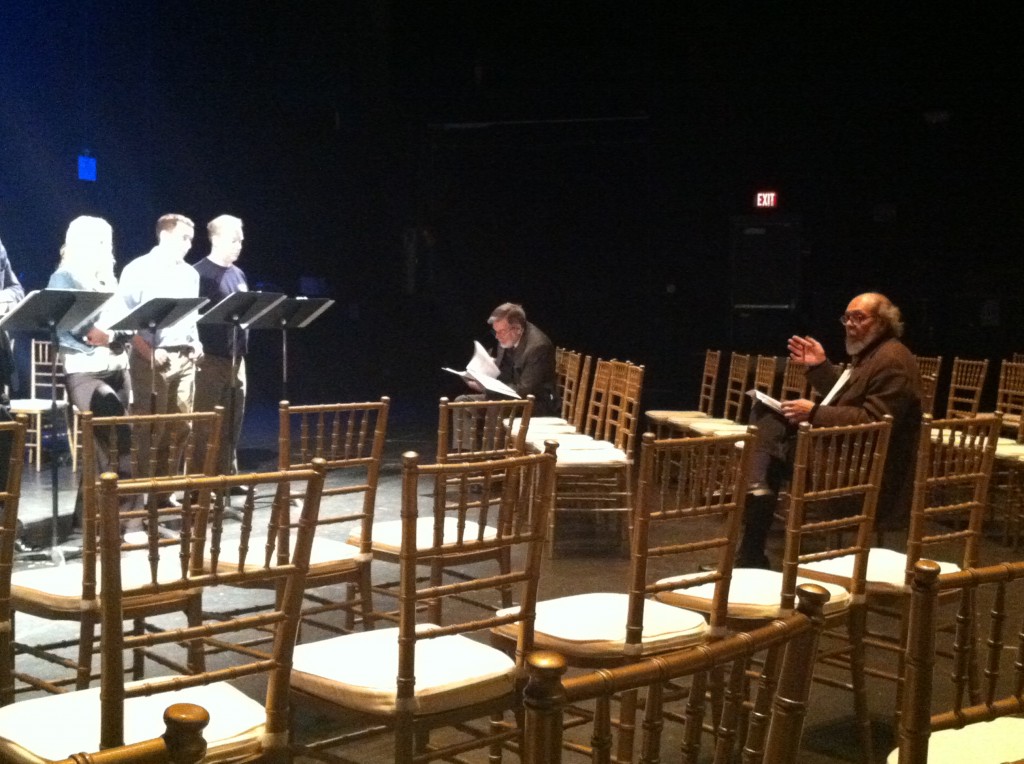
Columbo, and wrote the screenplays for the period films Casanova and The Duchess. He takes his historical research seriously. He conducted research for Sockdology in 1995 as part of AAS’s first class of fellows in our Creative and Performing Artists and Writers program, which allows artists and writers to delve into AAS’s collections and find new ways to incorporate them into products designed for audiences outside of the academy. Hatcher’s project was a prime example of the spirit behind the fellowships. His varied experience showed in his interactions with both the actors and the audience, and it was a real pleasure to watch him work.
All in all, this was one of those days I was thrilled to work where I do with the people I do. A little art, a little history, a beautiful setting, and interesting people are a mix that’s hard to beat.
